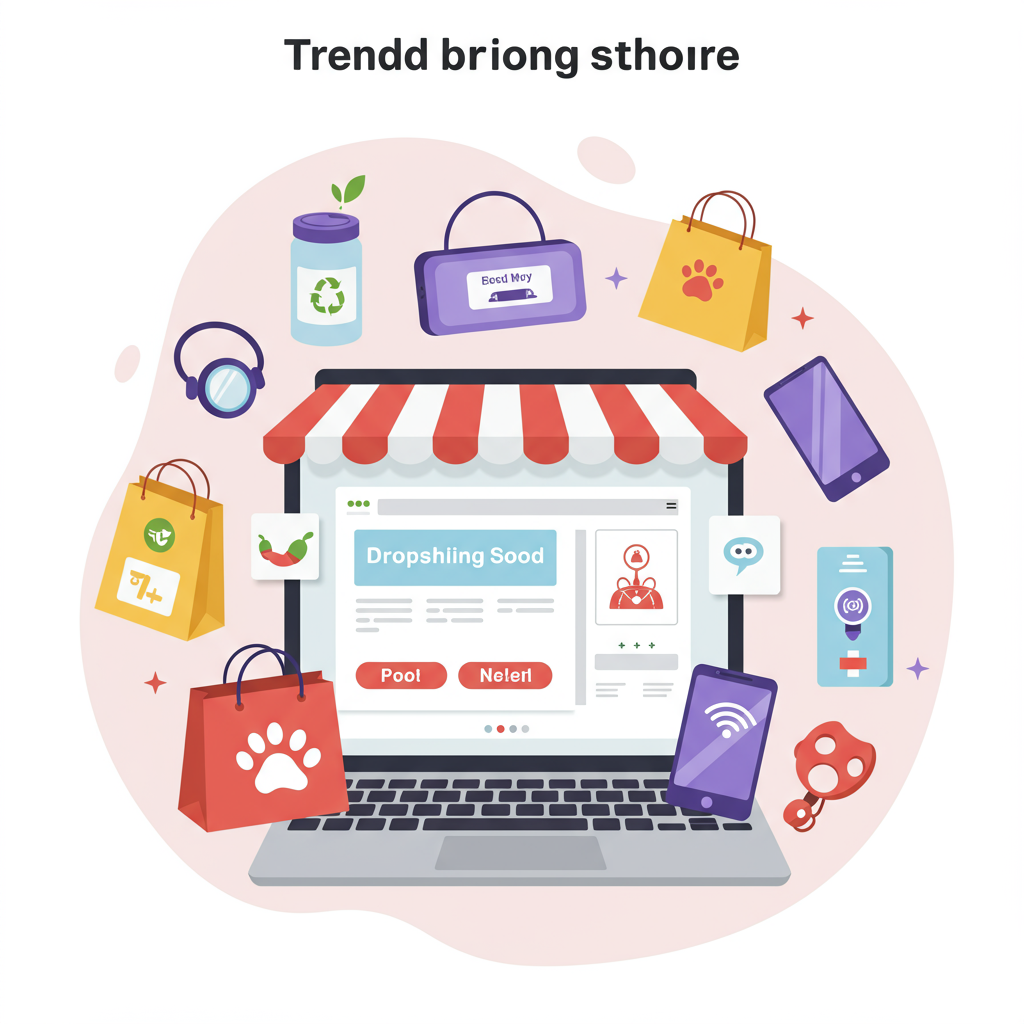My Insights on Future-Proofing Your E-commerce Business
As an entrepreneur deeply immersed in the world of e-commerce, I’m constantly looking ahead, trying to anticipate the next big wave. For those of us running Shopify dropshipping stores, staying ahead of the curve isn’t just an advantage; it’s a necessity for long-term success.
The dropshipping landscape is ever-evolving. What was hot last year might be saturated tomorrow. That’s why I’ve dedicated time to researching and identifying the most promising Shopify dropshipping niches that I believe will thrive in 2025 and beyond.
My goal with this article is to provide you, my fellow merchants, with actionable insights and a clear roadmap to help you choose a niche that resonates with future consumer demands and offers significant growth potential.
Why focus on 2025 specifically? Well, consumer behavior is shifting rapidly. We’re seeing increased awareness around sustainability, a greater emphasis on personalized experiences, and a continued integration of technology into daily life.
These macro trends aren’t just fleeting fads; they represent fundamental changes in how people live, work, and shop. By aligning our dropshipping businesses with these shifts, we can build more resilient and profitable ventures.
Let’s dive into the specific niches I’m watching closely. The first major area I’m excited about is **Sustainable and Eco-Friendly Products**.
Consumers are becoming increasingly conscious of their environmental footprint. They’re actively seeking out products that are ethically sourced, made from recycled materials, or designed to reduce waste.
This isn’t just about reusable water bottles anymore. Think about sustainable home goods, zero-waste beauty products, eco-friendly pet supplies, or even upcycled fashion accessories. The market for these items is expanding rapidly.
My advice here is to focus on transparency. Customers want to know the story behind the product. Highlight certifications, material origins, and the positive impact of their purchase. This builds trust and loyalty.
Next up, I see immense potential in **Personalized Health and Wellness**.
Beyond general fitness, people are looking for tailored solutions for their well-being. This includes everything from custom vitamin packs based on DNA tests to smart devices that monitor sleep patterns and stress levels.
Mental wellness products, ergonomic home office solutions, and specialized dietary supplements also fall into this category. The key is offering products that address specific, individual needs rather than a one-size-fits-all approach.
Another booming area is **Smart Home and Automation Gadgets**. As technology becomes more accessible, consumers are eager to automate their lives for convenience and efficiency.
This niche includes smart lighting, security cameras, voice-controlled assistants, robotic vacuums, and even smart kitchen appliances. The integration of AI and IoT (Internet of Things) is making these products more sophisticated and desirable.
I believe the focus here should be on solving everyday problems. How can a smart gadget make someone’s life easier, safer, or more enjoyable? Highlight those benefits in your marketing.
**Premium Pet Care Products** continue to be a strong contender. Pet owners are treating their furry friends like family members, and they’re willing to spend more on high-quality, innovative products.
Think about organic pet food, smart feeders, GPS trackers for pets, orthopedic beds, or even stylish pet apparel. The humanization of pets is a powerful trend that shows no signs of slowing down.
My strategy for this niche would be to target specific pet types or needs, like anxiety-reducing products for dogs or interactive toys for cats, to carve out a unique space.
**Customizable and Personalized Goods** are also on my radar. In a world of mass production, consumers crave uniqueness and self-expression.
This can range from custom-printed apparel and accessories to personalized home decor, engraved jewelry, or even bespoke stationery. The ability to add a personal touch makes a product feel special and increases its perceived value.
Leveraging print-on-demand (POD) services through Shopify apps makes this niche incredibly accessible for dropshippers. The creative possibilities are virtually endless.
I’m also keeping a close eye on **Niche Hobbies and Collectibles**. As people spend more time at home, they’re investing in their passions.
This could be anything from specialized crafting supplies (e.g., resin art kits, advanced knitting tools) to unique collectibles (e.g., rare trading cards, vintage toy replicas) or equipment for specific outdoor activities.
The key here is to identify underserved communities within a hobby. These enthusiasts are often highly engaged and willing to spend on quality products that enhance their passion.
Finally, let’s consider **Remote Work and Home Office Essentials**. While many have returned to offices, the hybrid work model is here to stay, and people are still investing in their home workspaces.
This niche includes ergonomic furniture, high-quality webcams, noise-canceling headphones, smart lighting for video calls, and productivity gadgets. Focus on comfort, efficiency, and professional appearance.
When selecting your niche, remember to validate it. Use tools like Google Trends, keyword research, and competitor analysis to gauge demand. Look for products with healthy profit margins and reliable suppliers.
Shopify makes it incredibly easy to set up a store for any of these niches. Apps like DSers or Spocket can streamline product sourcing and order fulfillment, allowing you to focus on marketing and customer service.
My final piece of advice is to choose a niche you’re genuinely interested in. Your passion will shine through in your marketing and help you connect more authentically with your customers.
Building a successful dropshipping business takes dedication, but by focusing on these forward-looking niches, I believe you’ll be well-positioned for growth in 2025 and beyond. What do you think about these niche predictions? I’d love to hear your thoughts!
Remember, the market is always changing, so continuous learning and adaptation are crucial. Stay curious, keep experimenting, and never stop looking for new opportunities to serve your customers better.






